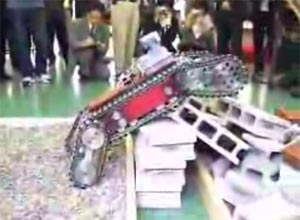A team of engineers from the Future Robotics Technical Center of Chiba Institute of Technology in Tokyo, Japan, has just unveiled a new generation rescue robot designed to search for victims trapped in rubble.
 |
| Source: youtube |
The new rescue robot, named Hibiscus, is capable of locating victims using an infrared thermal imaging camera. This camera measures temperature, identifies the positions of victims, and transmits images of areas where victims may be trapped to rescue teams.
What sets this robot apart is its mobility. Hibiscus features limbs similar to those of a human, allowing for a wider range of movement. Unlike previous versions, each arm of the robot can be controlled independently, enabling it to navigate and maintain balance over a larger area.
Hibiscus is also capable of operating underground. Additionally, the robot can create maps of hazardous disaster areas and send them back to a processing computer. These maps can be utilized by rescue teams to ensure safety and avoid potential secondary disasters. Robots like Hibiscus will be particularly useful in situations that are too dangerous for human rescue teams.
Weighing approximately 22 kg, the Hibiscus robot has a future goal of being developed into a lighter model weighing under 20 kg. The engineers hope to market these rescue robots next year, with an estimated price of around 3 million Japanese Yen, equivalent to approximately $27,000 USD.


















































